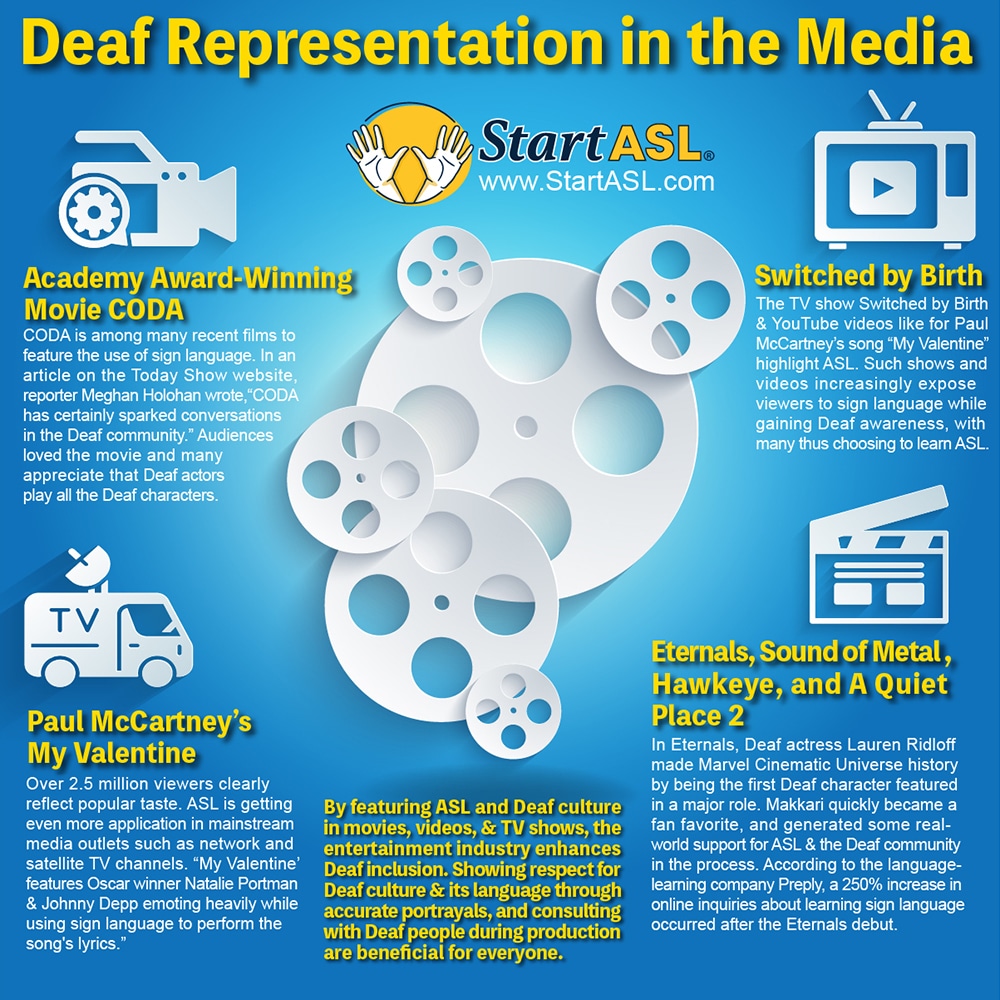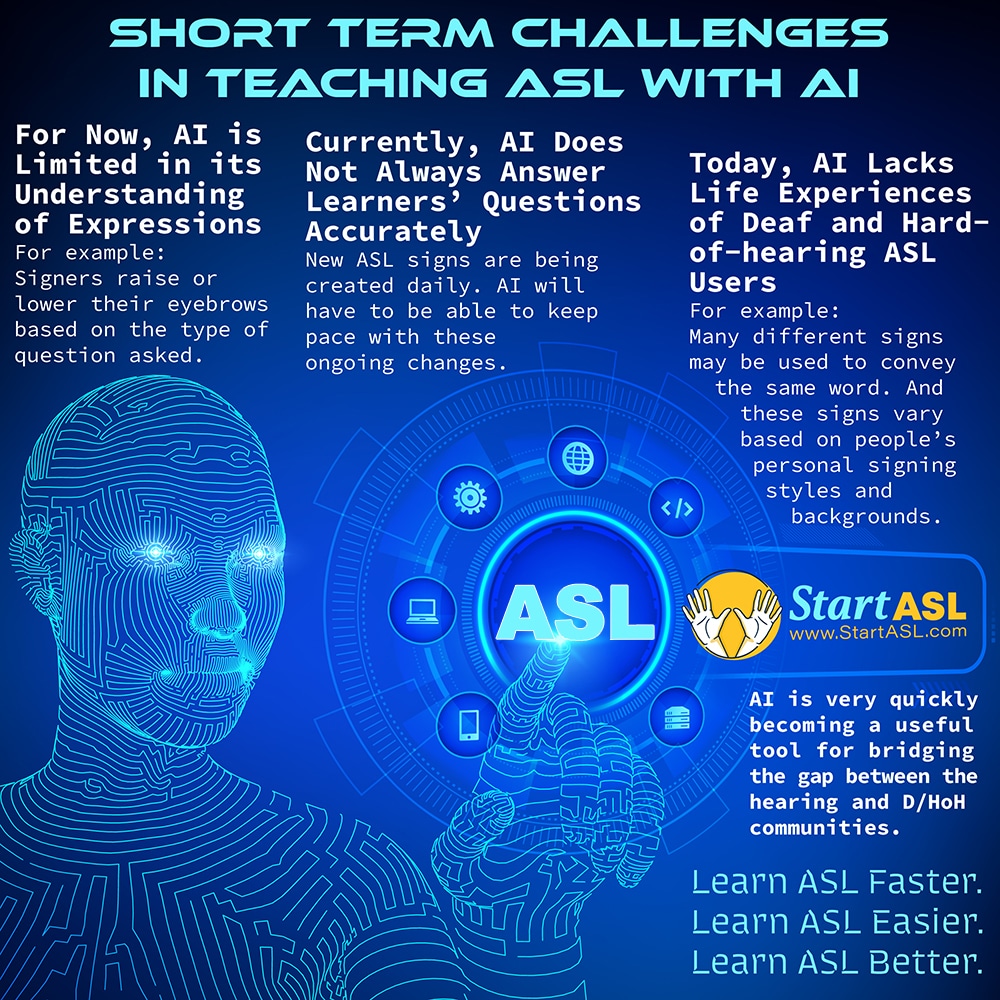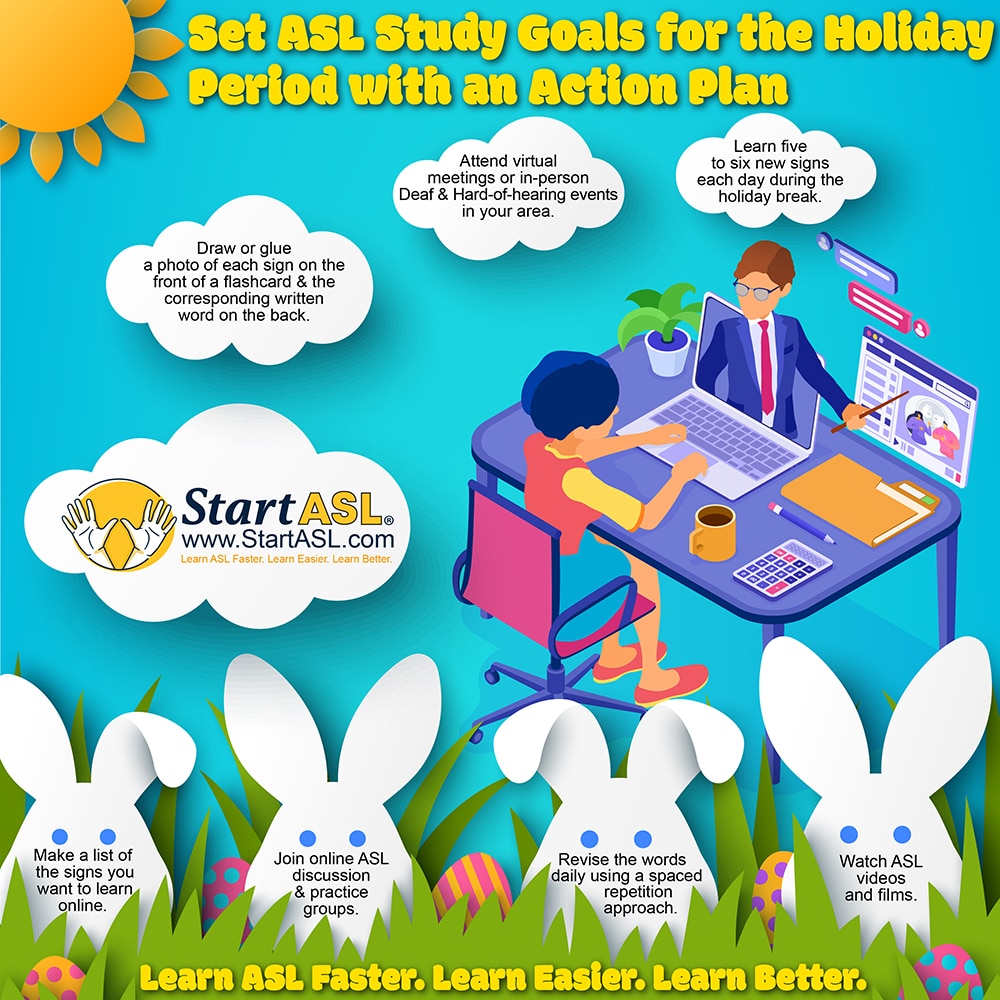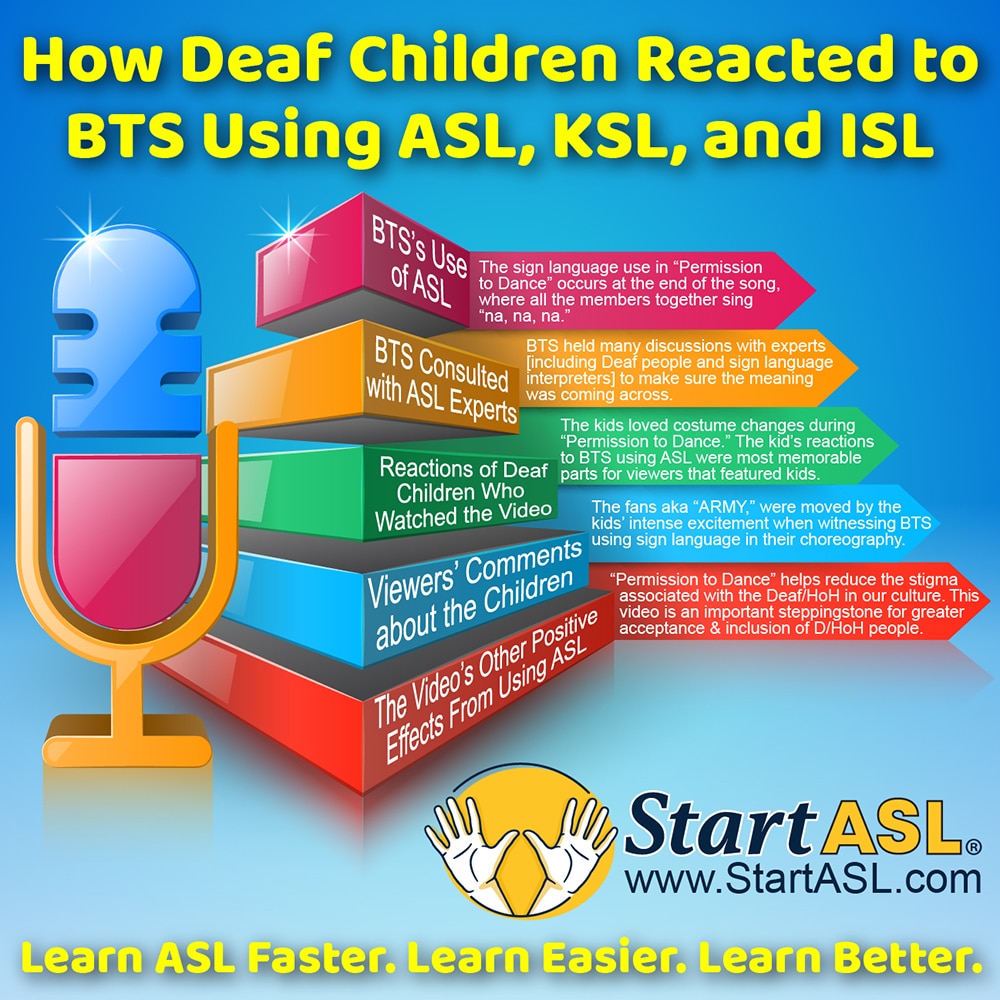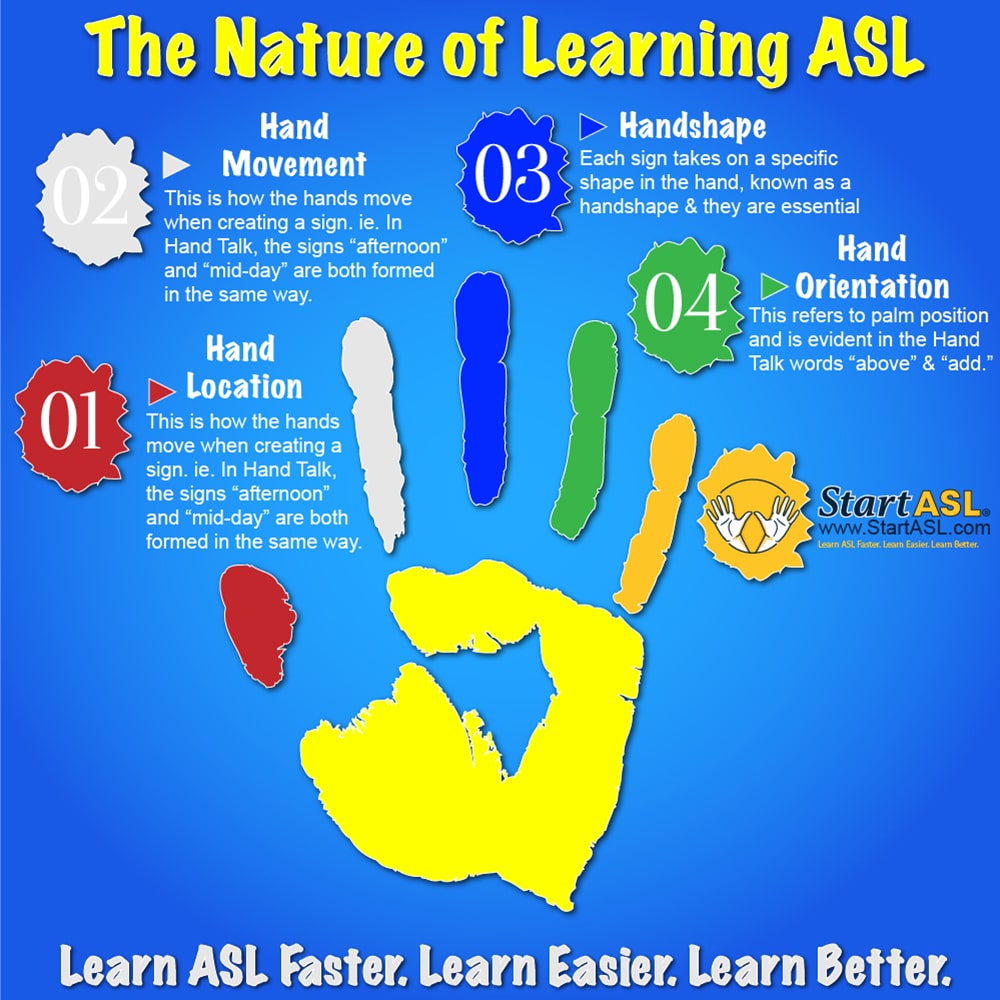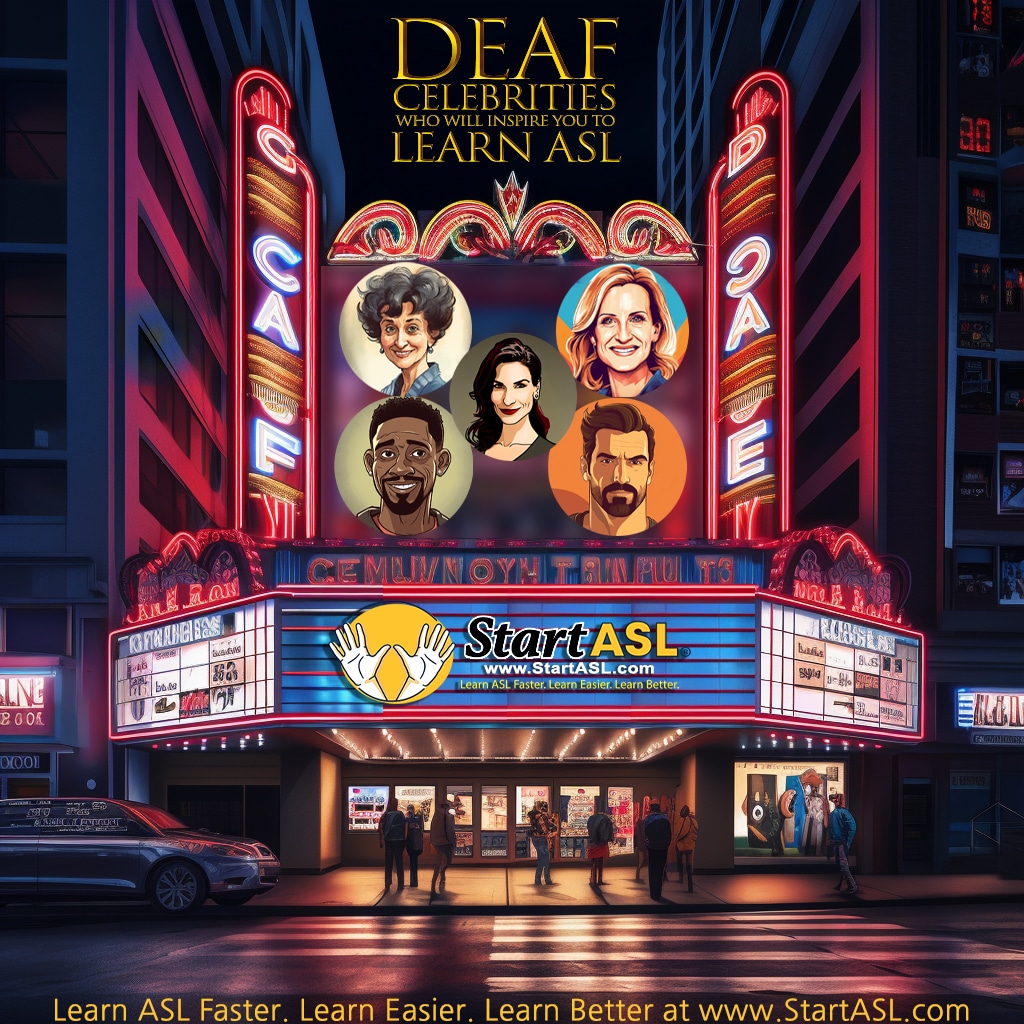
Parents Push for More American Sign Language Education for Deaf Children
- by Start ASL Social
- No Comments
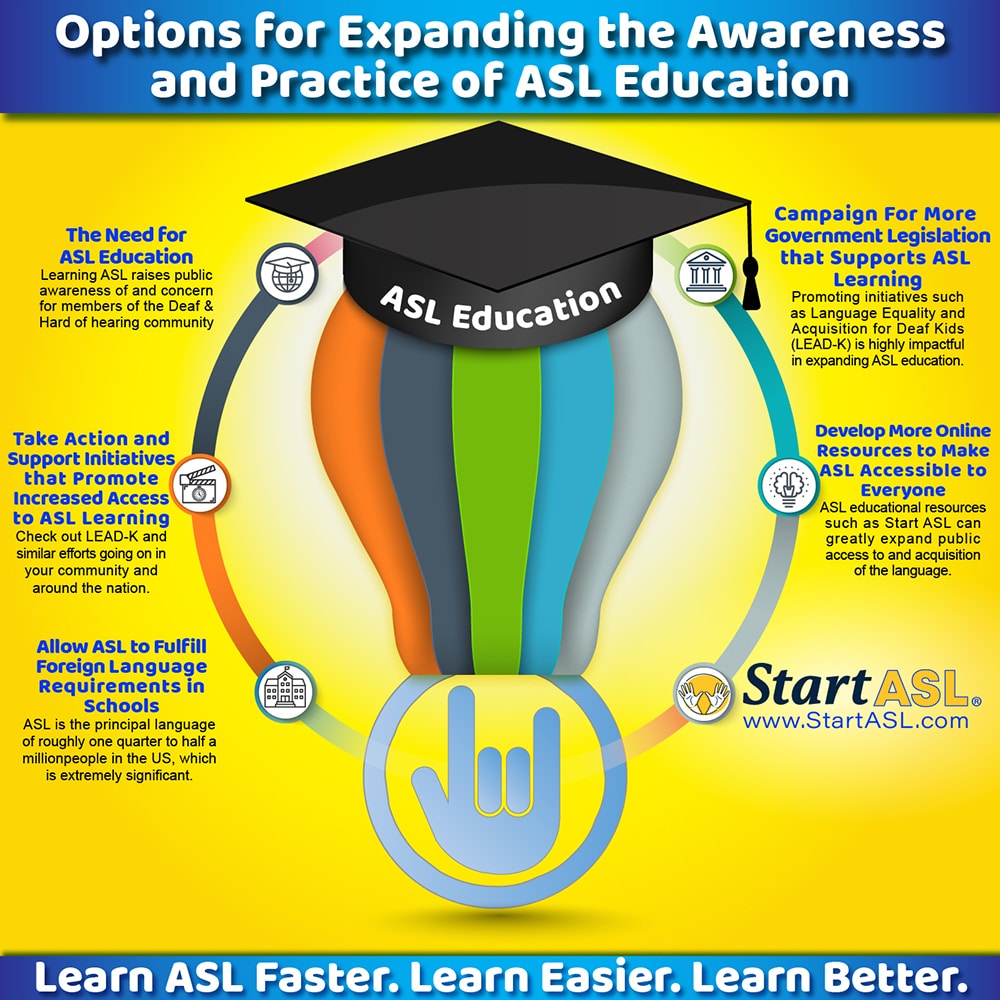
Parents Push for More American Sign Language Education for Deaf Children
More than 90 percent of D/deaf children in the United States have parents who can hear. Surprisingly, however, most of these parents never make the effort to learn American Sign Language (ASL) to communicate with their kids. 75% never use sign language in the home. As a result, many deaf children in the US are behind academically, emotionally, and socially when they enter kindergarten.
This situation has come about because today’s focus is on developing technological devices to increase Deaf or Hard-of-hearing (D/HoH) children’s ability to hear spoken English. And little stress is placed on the advantages of learning ASL. Thus, parents are frequently unequipped to effectively accommodate the needs of kids who are born deaf or become deaf while growing up.
For many families, having deaf kids learn only spoken English to communicate is lacking in many respects. This is shown by the fact mentioned above that more deaf and hard-of-hearing youngsters start kindergarten with fewer academic and social skills than their hearing peers.
Definition of American Sign Language
American Sign Language is a comprehensive natural language with linguistic features similar to spoken languages, and grammar and syntax rules that distinguish it from English. American Sign Language is not pantomime but is expressed through manual, facial, and bodily movements. Instead, it’s a sophisticated form of communication with evocative, complex actions and gestures essential to comprehending the language and conveying meaning.
Users of American Sign Language rely on their hands, bodies, and faces while communicating to convey feelings, interest, and focus. ASL is the principal language of many Deaf and Hard-of-hearing people in the United States and English-speaking Canada and is used by many hearing people.
The Need for American Sign Language Education
At the societal level, learning ASL is essential because it raises public awareness of and concern for members of the Deaf and Hard-of-hearing community. In addition, people fluent in American Sign Language develop a deeper understanding of Deaf culture and can encourage others in their area and elsewhere to appreciate the language and its many benefits to society.
At the level of family relations, knowing American Sign Language can greatly facilitate smooth communication among Deaf and hearing family members. And at the educational level, it can help Deaf children be more prepared to enter kindergarten on an equal footing with hearing students.
Parents of Deaf Kids Push for More ASL Education
Deaf/HoH children who don’t know how to sign face many disadvantages when entering school. In light of this, many parents are now advocating for more American Sign Language education in US schools. Research shows that kids who learn sign language early in life do better in a number of areas such as academic achievement and social interaction, as opposed to those who don’t.
Children diagnosed as deaf or hard-of-hearing are usually fitted with hearing aids, cochlear implants, or both. Hearing aids strengthen the children’s residual hearing ability, while cochlear implants entirely circumvent the ears and send electronic signals straight to the brain.
A recent issue of Social Service Review contained an article titled “Avoiding Linguistic Neglect of Deaf Children.” In it, the authors, who are mainly Deaf or Hard-of-hearing themselves, state that this “speech only” approach, which uses electronic devices, negatively affects many deaf children. It prevents them from learning the language in the critical first years of life. This, in turn, leads to inadequate brain development and does lasting harm to their mental and social functioning. A better strategy is for parents to start teaching sign language to their deaf children as early as possible.
Benefits of Learning ASL for Deaf Children and their Families
A large number of studies in language learning support this view. They show that Deaf and Hard-of-hearing children who learn sign language in their early years perform better in school and society. Without a doubt, children need language to flourish. Language learning enhances cognitive development, emotional well-being, family interactions, and social bonds. When children lack sufficient experience with language, their brains fail to develop correctly. As a result, they become socially and emotionally cut off. They also become vulnerable to other kinds of mistreatment.
What’s more, when it comes to Deaf/HoH children’s learning ability, many are extremely delayed in their understanding of class material. However, they continue to be passed to the next grade until they graduate. Then when they leave school and enter the world of relationships and work, they lack the literacy skills to cope with getting a job, earning a living, and otherwise functioning in society.
Challenges to Expanding Access to ASL Education
However, despite these problems, many parents of Deaf/HoH kids find that their communities lack the resources needed to conduct American Sign Language instruction. When the parents consult with educators about how their Deaf or Hard-of-hearing child can be helped, they become frustrated. There needs to be more discussion about communication, access, language learning, and the parents’ options.
Local school districts generally have no services for Deaf/HoH students. Thus, the opportunities for these children and their ability to access language learning urgently need expansion.
Solutions for Increasing Access to American Sign Language Education
In addressing this problem, social workers can play a key role. That’s because promoting child welfare is central to their profession. Also, social workers are uniquely positioned to observe the effects of defective language learning in children.
To help address the issue of inadequate American Sign Language education in their communities, social workers can do the following:
- try hard to educate themselves about the problem
- take action to inform the public about ASL education, and
- support high standards of ASL learning for Deaf/HoH children.
In this way, Deaf/HoH children can avoid experiencing “linguistic deprivation” or lack of fluency in any language, along with the cognitive and social deficits it creates.
Other Options for Expanding the Awareness and Practice of American Sign Language Education
Below are additional approaches to expanding American Sign Language learning through the communications media, government, and educational systems.
Allow ASL to fulfill foreign language requirements in schools
Offering ASL to fulfill a foreign language requirement is a practical option for all students. That’s because American Sign Language is the principal language of roughly one-quarter to half a million people in the US. This is highly significant in view of the implications for Deaf children, who will undoubtedly need the language to communicate throughout their lives. Offering ASL as a foreign language option can also result in better child care for Deaf and Hard-of-hearing kids. It can significantly facilitate interactions between the D/HoH and hearing communities when ASL is known and used by many people.
Develop more online resources to make American Sign Language accessible to everyone
At the start of 2023, a total of 5.16 billion people worldwide were using the internet. This number is equivalent to 64.4 percent of the global population. Thus, increasing the number and availability of online ASL educational resources such as Start ASL can significantly expand public access to and acquisition of the language.
Campaign to get more government legislation that supports ASL learning
Promoting initiatives such as Language Equality and Acquisition for Deaf Kids (LEAD-K) can be highly impactful in expanding American Sign Language education. LEAD-K is a national legislative campaign. It calls for states to put ASL learning on a par with English learning so that D/HoH kids have a strong language foundation as they start school. It also requires states to ensure that D/HoH children are at age-appropriate learning levels by the time they reach kindergarten.
LEAD-K legislation emphasizes American Sign Language as the principal form of communication for D/HoH children. For this reason, it provides a strong impetus for the growth of American Sign Language education on both the state and national levels.
The approaches described above can go a long way toward providing greater access to ASL education. If you would like to take action and support initiatives promoting increased access to ASL learning, check out LEAD-K and similar efforts in your community and around the nation. You can also start studying American Sign Language online to become part of the growing American Sign Language family.


